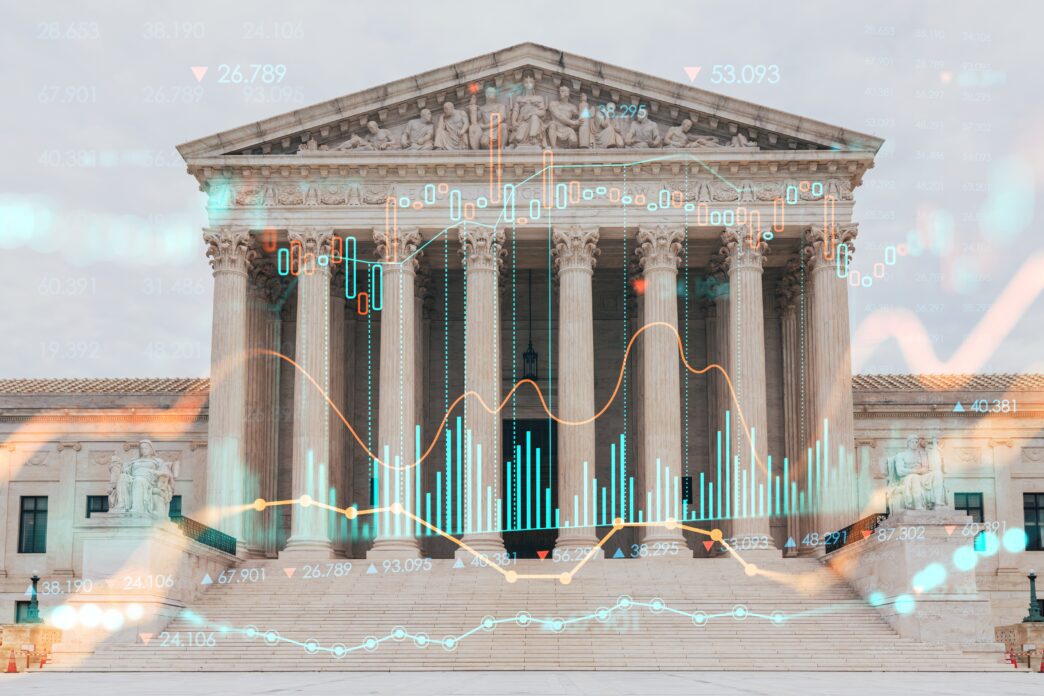Executive Summary
The Story So Far
Why This Matters
Who Thinks What?
The U.S. Supreme Court is expected to rule by January on the legality of President Donald Trump’s sweeping tariffs, which he imposed earlier this year by invoking the International Economic Emergency Powers Act (IEEPA). President Trump has warned that the economy would “go to hell” if the justices reject his authority, likening the potential downturn to the Great Depression. The tariffs have raised the average tax on U.S. imports to its highest level since 1935, despite the S&P 500 advancing 16% year-to-date.
Legal Basis for Tariffs Under Scrutiny
President Trump utilized the 1977 IEEPA, which grants the president broad authority to regulate economic transactions following a national emergency declaration, to implement the tariffs. He cited persistent trade deficits as the basis for a national emergency. The tariffs include duties on goods from Mexico, Canada, and China, a 10% baseline tariff, and country-specific reciprocal tariffs, leading to an estimated average import tax of 17.4% by Yale’s Budget Lab.
However, the legality of these actions is being challenged, with critics arguing that the IEEPA does not explicitly authorize tariffs. Three lower courts—the U.S. Court of International Trade, the U.S. Court of Appeals for the Federal Circuit, and a federal district court in Washington, D.C.—have already ruled the tariffs illegal. Accounts from The Wall Street Journal, Bloomberg, and The New York Times suggest that the Supreme Court justices appear skeptical of the administration’s position, with some reportedly expressing outright hostility.
Economic Impact and Presidential Warnings
Since the tariffs were announced in April, the U.S. economy has shown signs of weakening. The jobs market experienced a slowdown over the summer, and layoffs reached a 22-year high in October. Economists surveyed by The Wall Street Journal anticipate inflation to remain above 3% through mid-next year, contrary to President Trump’s assertions that tariffs have not caused inflation. Consumer sentiment also declined to its second-worst reading in history in November, according to the University of Michigan’s Consumer Sentiment Index.
President Trump has argued that rejecting the tariffs would necessitate the repayment of tens of billions of dollars in collected revenue, potentially triggering an economic disaster. The U.S. has collected over $225 billion in tariffs year-to-date, nearly three times the amount collected at the same point last year.
Potential Market Reactions
Despite the economic headwinds, the S&P 500 has staged a significant comeback since an initial dip following the tariff announcement, currently on pace for its third consecutive year of double-digit gains. Some analysts suggest the stock market could soar if the Supreme Court rejects the tariffs, given the perceived negative impact on the economy.
However, a counter-argument posits that a ruling against the tariffs could force the government to borrow money to repay collected revenues. This increased borrowing could push Treasury yields higher, potentially making bonds more attractive and leading to a decline in the stock market. Investors are advised to maintain a long-term focus, as the S&P 500 has historically delivered substantial returns over extended periods.







